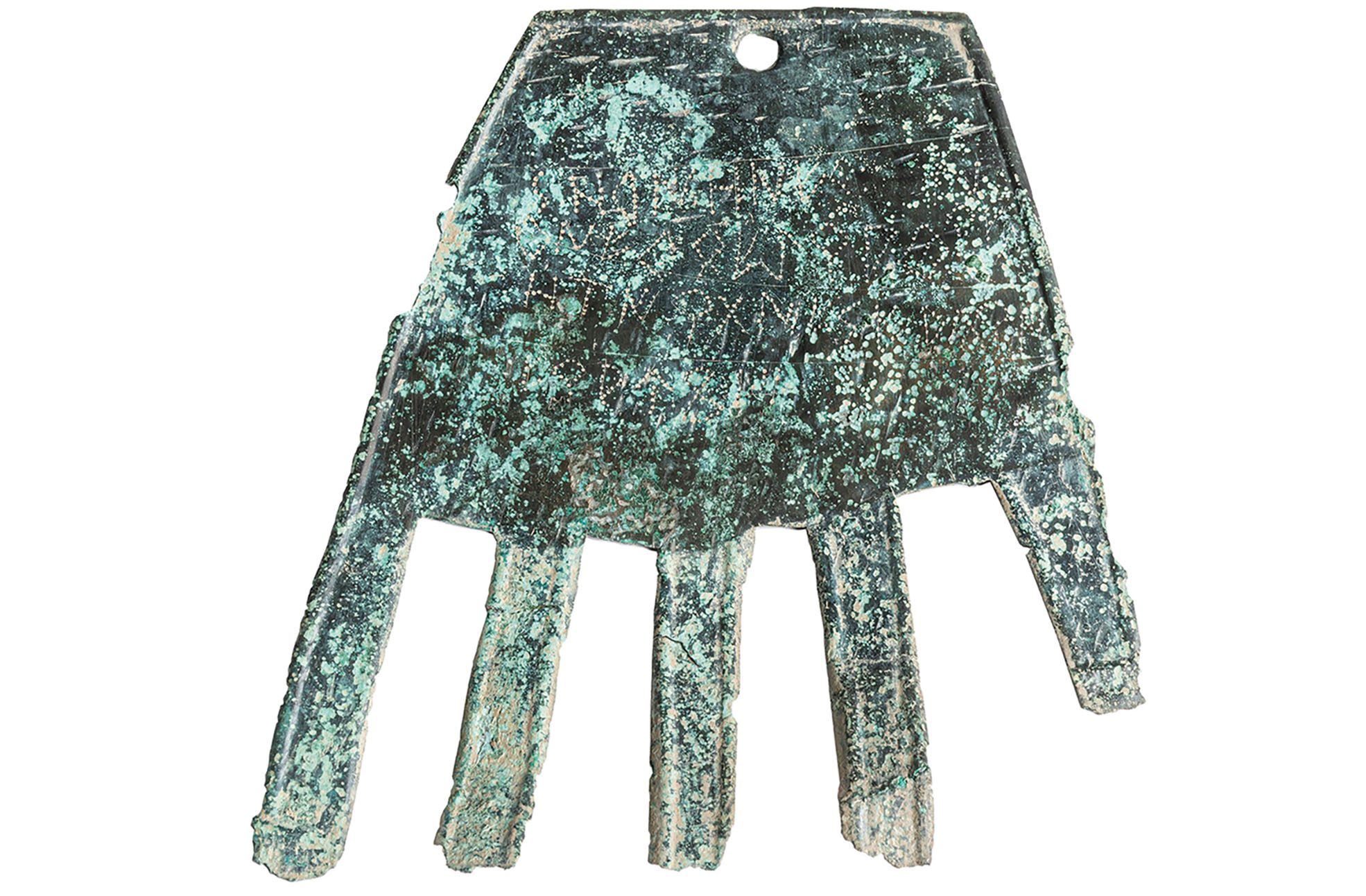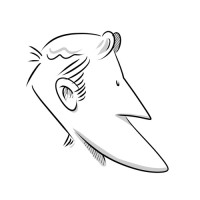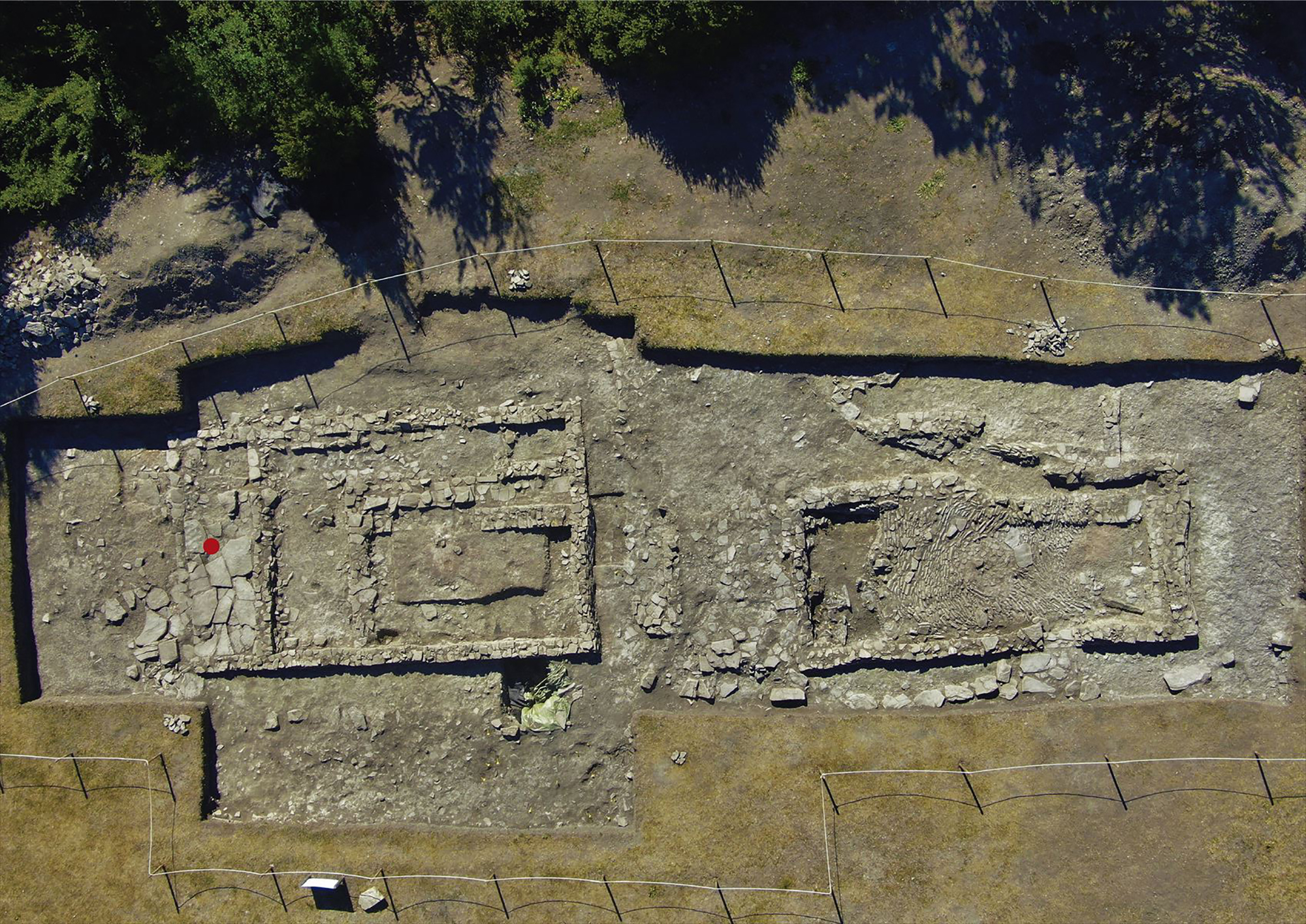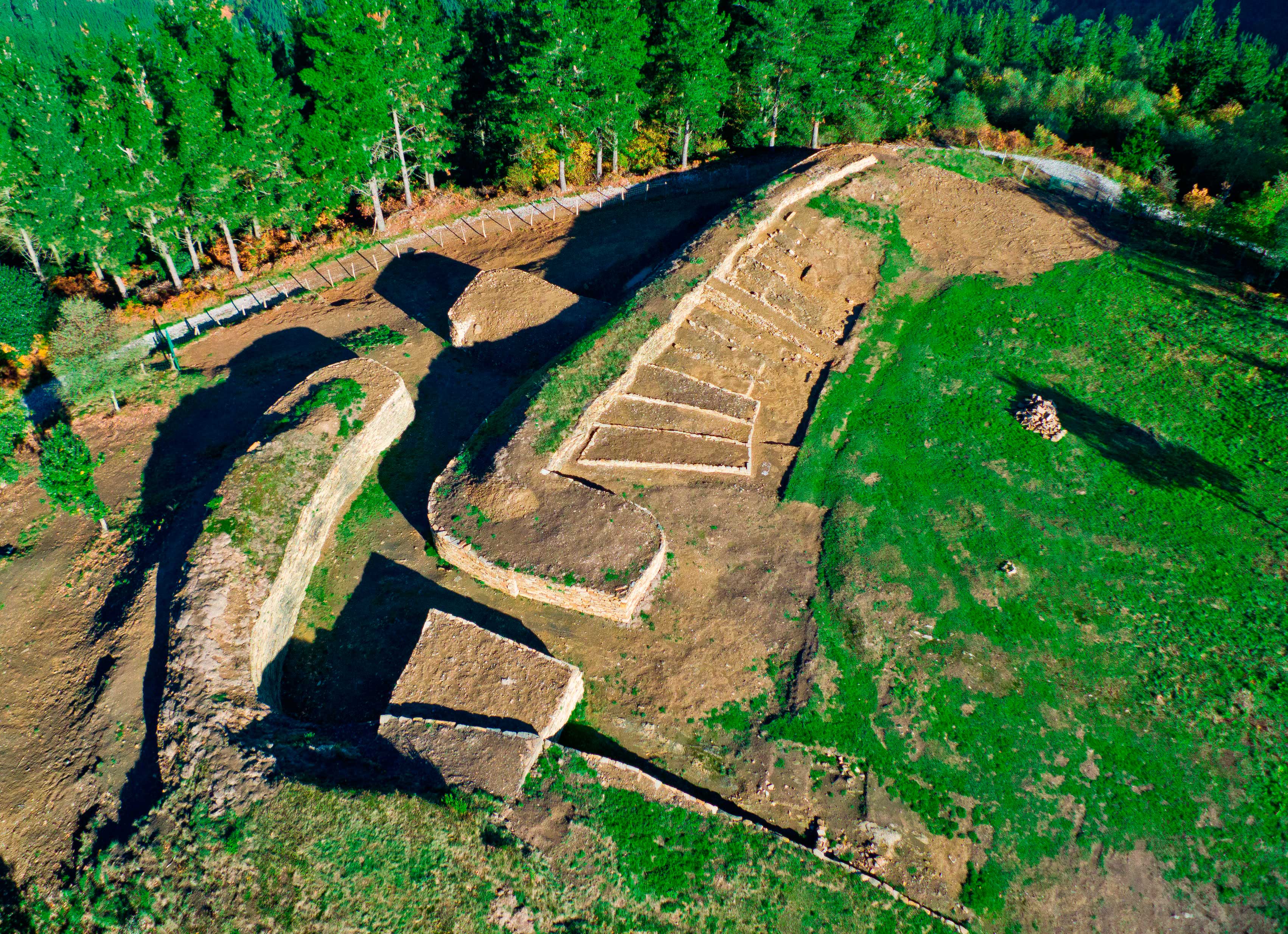In Navarra the text written in the oldest Basque was found
- The inscriptions appear on a hand shaped bronze sheet from the 1st century a. C. The text is written in a variant of the Iberian alphabet, adapted to the ancient Basque or "vascón": At first you can see the word “happy”. The Government of Navarra and Aranzadi have made the finding known and have emphasized that it will be a “milestone” to investigate the evolution of the Basque Country. ARGIA interviewed exclusively the director of the Mattin Aiestaran site.
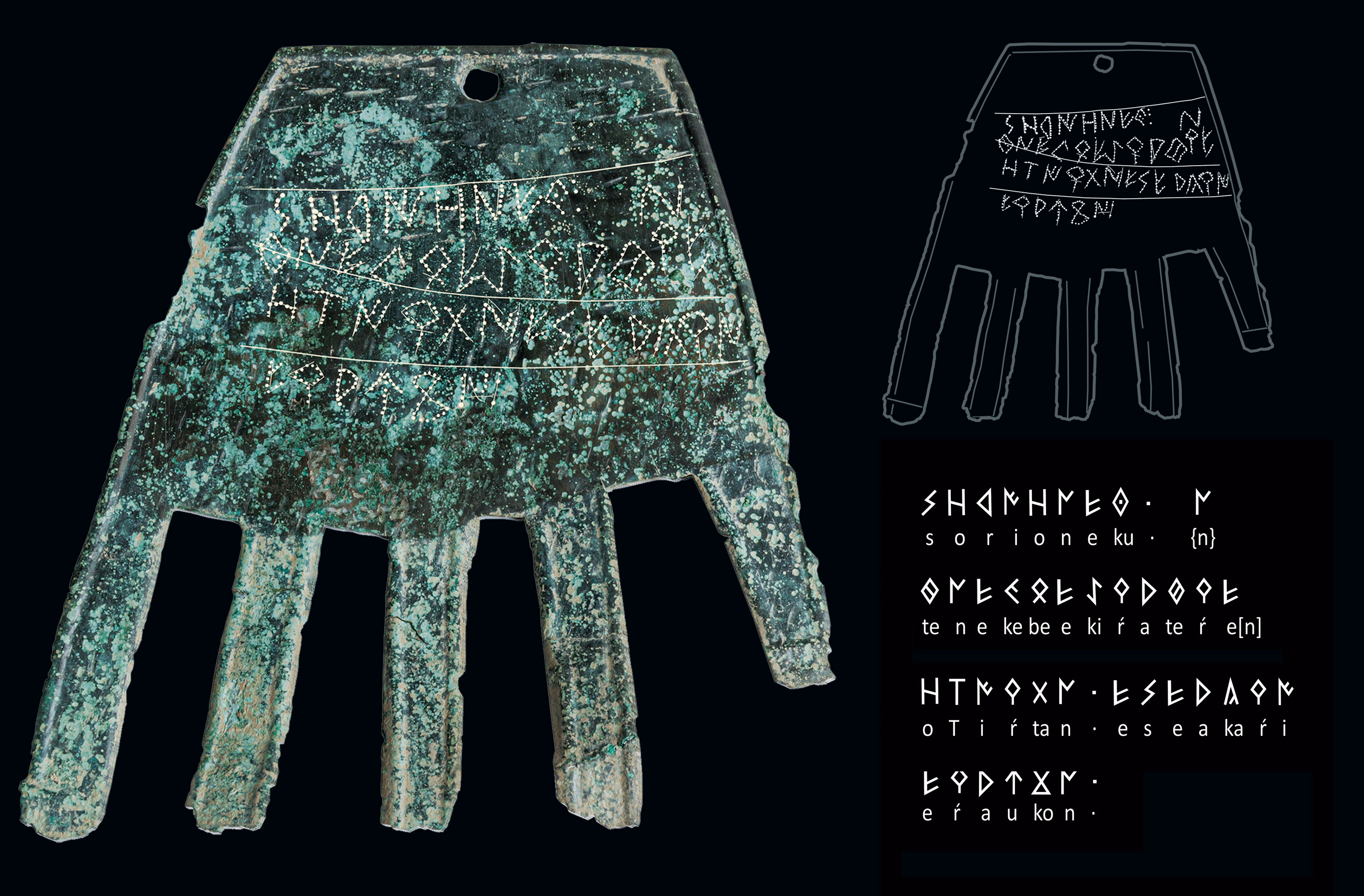
The 14-centimeter hand-shaped bronze piece is over two thousand years old. It appears in the site of the village of the Vascones of Irulegi, excavating in Aranzadi, in the Aranguren Valley in Navarra, with a lateral inscription of four lines and 40 signs. The text is written in a variant of the Iberian scripture, adapted by the Vascones of the time to the Basque of Antiquity; in the first word it can be read “fortunately”, once the transcription is completed.
On Monday, the President of Navarre, María Chivite, announced the discovery at the Gongora de Aranguren Palace, near the Irulegi site. Along with her have been the Minister of Culture of the Government of Navarra, Rebeca Esnaola, the mayor of the City Hall of the Aranguren Valley, Manolo Romero, and the director of the site of Mattin Aiestaran.

The representatives of Aranzadi have given prime importance to the discovery, as it shows that 2,100 years ago the Basques wrote and used the script adapted to the Old Basque: “This discovery is a landmark in the history of our society, as was the discovery of Ekain’s paintings,” explains Aranzadi Secretary General Juantxo Agirre to this journal.
The discovery shows that 2,100 years ago the Basques wrote and used the script adapted to the then Basque, according to experts
The bronze hand appeared at the site in June 2021, within the excavations being carried out by Aranzadi, on the portico of a house in the Iron Age village. They explain that the procedures and protocols have been fully monitored from the outset.
When the piece appeared, it was transferred directly to the Cellar de Arqueología de Navarra with its land, to Cordovilla, for cleaning by the technical and restoring archaeologists of the Government of Navarra, as they do with other pieces. Months later, he started the cleaning process and discovered that he had writings.
During this time they have carried out several studies to learn about the archaeological context, the dating, which dates from the first quarter of the first century a. C., and the consequences of linguists. Now they want to present their results to the scientific community, in the journal Antiquity from Cambridge University, and the article has already passed the first sieve of the editor.
.jpg)
Old Basque had its own graphic system
The text has been researched by the author Javier Velaza and professor at the University of Barcelona, along with the UPV linguist Joaquín Gorrotxategi. Answer Aranzadi’s questions by saying that the footprint is “extraordinary” for many reasons, and above all by written language: “Starting from Irulegi’s piece, we can say that there was a proper graphic system in Vascón.”

Even though the text is in the Iberian alphabet, the Basques have letters to capture the sounds of their language, like a kind of “T” that appeared in the two currencies of the time, so they say we are talking about a Basque variant of their own. Only the first word is understood and transcribed the entire text as follows:

“We thought that the Basques were not able to write successive texts, but this eliminates that idea,” explains Gorrotxategi to Aranzadi. Located in the “heart” of the Irulegi forests, a few kilometers from Pamplona.
An amulet to attract happiness
The hand-shaped blade has fingernails drawn at the tips of the fingers and a hole. Aiestaran explained that they think he would be nailed or hung at the door of the house and that they would use him as an amulet to attract good luck and drive away misfortune, hence putting the word “happy”.
.jpg)
In Huesca (Aragon, Spanish State) other pieces appear manually, but without inscription, and in Yemen, the Zafar site, another example of a hand of the time with inscription to attract happiness.
Exclusive reporting and interview this week
ARGIA includes a comprehensive report in this week’s magazine by the collaborator, archaeologist and member of the research team Josu Narbarte, among the signatories of the scientific article. He says that until now we only had names of people or gods interspersed in Latin steles, so Irulegi “is the longest phrase in Basque Age.”
We have also interviewed exclusively excavation director Mattin Aiestaran: “We are talking about the oldest safe document in the history of the Basque Country,” he explains. The full dialogue is already here. If you want to promote this kind of content and receive the magazine at home, do the ARGIA.
Martxoaren 30erako Iruña-Veleia martxan, SOS Iruña-Veleia eta Euskeraren jatorria elkarteek manifestaziora deitu dute, Aski da! Argitu, ez suntsitu lelopean. Azken bi urteetan "hondeatzaileak sistematikoki eremu arkeologiko oso aberatsak suntsitzeko modu... [+]
On August 1, a dozen people from the family were in Aranguren. Two young people from Aranzadi made firsthand the excavations and works being carried out in Irulegi. This visit is highly recommended, as it reflects the dimension of the work they are doing.
Halfway, at the first... [+]
You might see it in mountains or rural areas, looking for underground footprints with metal detectors. They're detectors or pitchers, they bond to play for treasure. Detectorism has become fashionable and there are youtubers and television series talking about them. This activity... [+]
I believe that in recent years two well-differentiated stories are being constructed about our history, our culture, our language, etc. On the one hand, what we could call "official line" and on the other, a line based on recent research and archaeological findings.
The discovery... [+]
The hand of Irulegi, over 2,000 years old, is being an unprecedented incentive in the national conscience of the Basque Country. Its impact, so that the Basques feel so strong and emotionally challenged, invites us to think about what really lies behind this discovery.
This is... [+]









